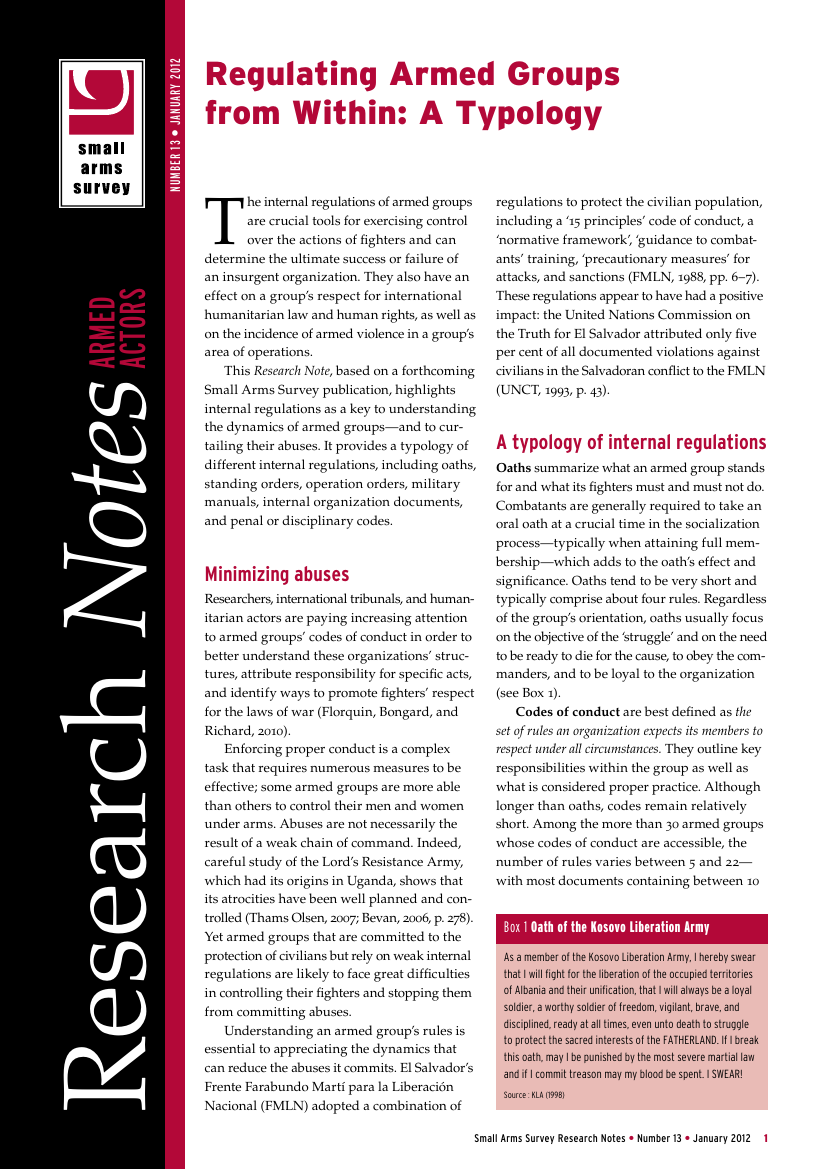
Regulating Armed Groups from Within: A Typology (Research Note 13)
Armed groups—such as insurgent organizations—rely on internal regulations to exercise control over fighters; these rules also affect the groups’ respect for humanitarian law and human rights, and on levels of armed violence. Certain types of regulations can provide detailed guidance on the use of arms, their storage, and their management.
The Research Note Regulating Armed Groups from Within: A Typology looks at how internal regulations offer a key to understanding the dynamics of armed groups—and to curtailing their abuses. It provides a typology of different internal regulations, including oaths, standing orders, operation orders, military manuals, internal organization documents, and penal or disciplinary codes.
Oaths, usually a short statement of around four rules, summarize what an armed group stands for and what its fighters must and must not do. Codes of conduct are a set of rules an organization expects its members to respect under all circumstances, outlining key responsibilities and proper practice. Standing orders define behaviour that is expected in a specific situation as opposed to at all times. Military manuals give ‘by-the-book’ solutions to generic problems and can address tactical, operational, and strategic issues as well as the use of weapons, thereby promoting standard military behaviour. Internal organization documents spell out the procedures to follow when taking decisions.
Codes of conduct are often accessible to outsiders, while armed groups usually consider other regulations as strictly internal and confidential. Codes of conduct are useful in understanding armed groups, but they represent just a partial window into the groups’ complex internal workings.
Have your say about Small Arms Survey publications and products: take 5 minutes to fill out our questionnaire.